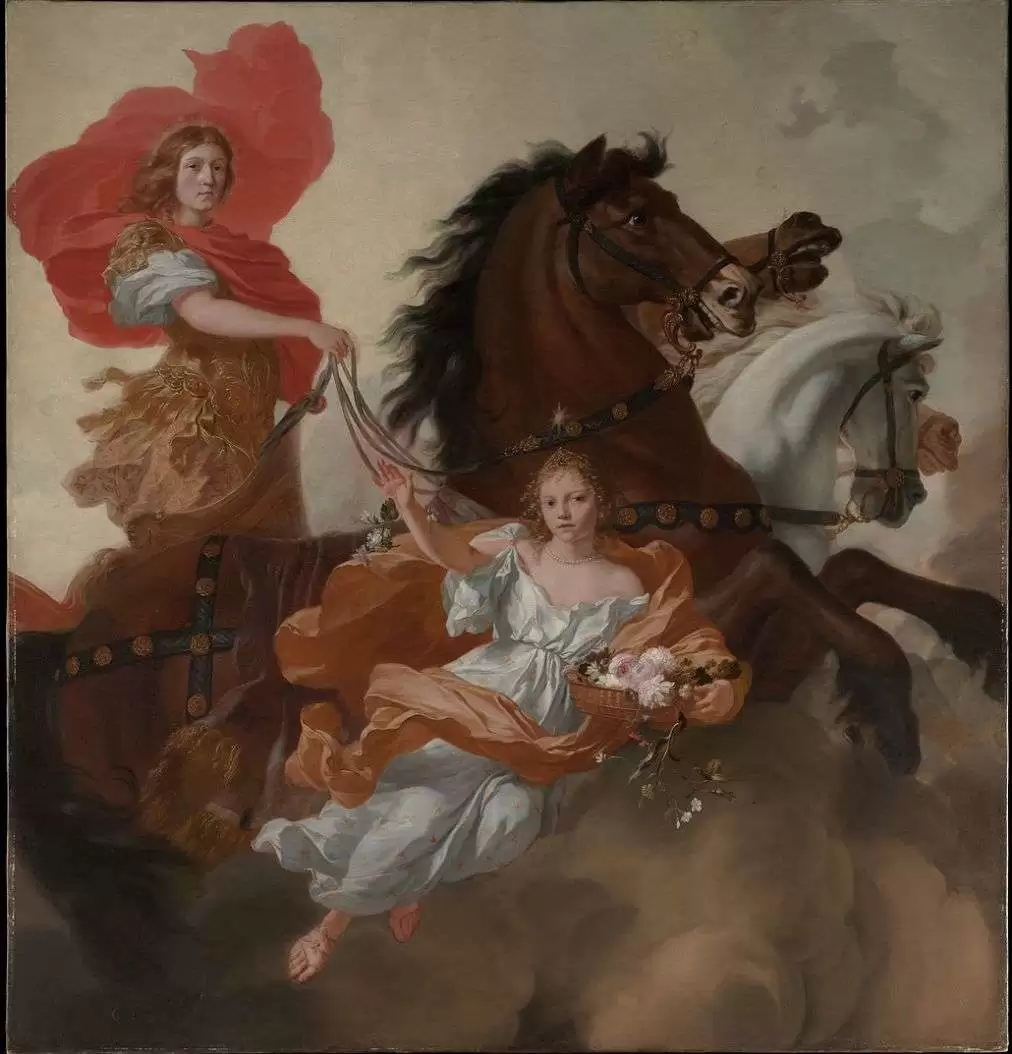
By Wei J C
The 17th century European paintings emerged a century after the Renaissance. The mighty Michelangelo, the unfathomable Da Vinci, and the elegant Raphael are not far from memory; they had left influence all across Europe, especially on French art. In the meantime, Germany and the Netherlands in the north have developed different painting genres due to unique religious and geographic environments.
After Martin Luther’s Reformation in 1517, the European regions which practice Protestantism were unenthusiastic about, and even banned, the reinstallation of churches and statues. “The Art of the Dutch Golden Age” flourished in this context. Today, these paintings are found all over the major art galleries. They have unique styles, covering numerous and complex subjects, and are distinctly different from other European countries in themes and contents.

In the 17th century, the Netherlands emerged victorious from the Eighty Years’ War, breaking away from Spanish rule and replacing it as a major naval power. Its entry into the era of global maritime trade and economy, brought in immense wealth for the country, which also gave rise to a new social class. The European art at the time has transitioned from Mannerism to Baroque. The dedication to divinity and classical art still existed; but unlike Renaissance painters who were committed to theological and spiritual exploration, the art at this time had turned to a more human perspective. In the Netherlands, a republic built on the wealth earned from trade, the aristocracy has declined and the middle class were on the rise; aristocrats even had to rule the country alongside the merchants. As social structures changed, collecting and funding for artworks were no longer the privileges of the Holy See or the aristocrats, which also brought new demands for artworks. At that time, Amsterdam was still the heart of the publishing and printing industry; works that had been controversial in European countries were published here, where economic interests has clearly brought greater tolerance and relaxation.
This is the background of the “Dutch painting” that we see in art museums today, the “painting” that is produced in this time of change: the beginning of a generation that focused on “secular subjects.” While some held on to the faith in classicism, others who aim for the acme of creativity created paintings with a strong personal style. The works we see in art museums now are selected by people of different generations, which reflect the transition of human ideology and aesthetics. But looking back at the situation at the time, one may find a different reality.
The 2020 “Rethinking Art of the Dutch Golden Age at the Met” Exhibition
The New York Metropolitan Museum of Art celebrates its 150th anniversary with exhibitions of its rich collection. Sixty-seven Dutch paintings from the 17th century are exhibited thematically. The paintings on display, which modern historians would refer to as from the “Dutch Golden Age,” are organized by the young curator Adam Eaker. The curator arranged the works under nine major themes, covering most of the active painters in the period. Sitting at the atrium of the exhibition is the rarely seen Aristotle with A Bust of Homer (1653) by Rembrandt van Rijn (1606-1669). On the left is the classical-themed Apollo and Aurora (1671) by Gerard de Lairesse (1641-1711), his only work shown in the exhibition. These two paintings surround the atrium and serve as the two starting points of the circular gallery.

Visitors would return to the starting point after going through the entire circular gallery. The curator seems to deliberately emphsize the tussle of Dutch paintings between realism and idealism in the 17th century. With the juxtaposition of these two paintings at the start of the exhibition, the curator appears to remind us of how the “Dutch paintings” we have seen in the past two hundred years came into being. So what was the reality at the time? Inspired by this exhibition, the author, who has been curious about the paintings of this period, shares her thoughts regarding the works of three selected painters—Lairesse, Rembrandt, and Vermeer. In a sense, they are also the most representative figures of the painting style of this period.
Gerard de Lairesse, The Practitioner of Elite Aristocratic Art
(Gerard de Lairesse , 1641-1711)
Many people may have never heard of Gerard de Lairesse, but he was a beloved painter, poet, and playwright in his time, spanning from the 17th century to the early 18th century. Lairesse and Rembrandt both lived in the republic of the “Dutch Golden Age.” It is known that Lairesse was thirty-five years younger than Rembrandt, and that they had met in Amsterdam in 1665. Rembrandt once painted a portrait of Lairesse, which has appeared in this exhibition. The two probably had a good relationship, but their artistic perspectives were vastly different. Lairesse believed that art is the carrier of the spirit and should not address the concerns of secular life and used to make realistic portraits. The purpose of visual art is to advance the spirit of human civilization. Therefore, art must be sublime and enlightening, selected for the elegance and the beauty of nature rather than a random reproduction. This is also the artistic principles held by all who promote the classical humanistic spirit.
Lairesse is a disciplined intellectual who is proficient in drawing, painting, drama, and poetry. He said that artists must learn elegance through integration with society and elites, and pursue the highest moral principles and idealistic beauty. Judging from the portrait made by Rembrandt, Lairesse was not much to look at—with a crooked nose and a bulging forehead, and he also suffered from congenital syphilis. Yet he was extremely talented and sociable, and was therefore frequently hired to adorn the interiors of government buildings and homes.

At the age of forty-nine, Lairesse was blinded by the virus. He stopped painting and devoted himself to teaching and writing; in two years, he completed two books that would influence future generations. In Fundamenten voor tekenen (“Foundations of Drawing”), which was published in 1701, he expressed his disapproval of the realism style used by many painters in Dutch Golden Age, such as Rembrandt Van Rijn, Adrienne Brouwer, Adrian van Ostade, and France Hals. These painters often portrayed everyday scenes and common people such as soldiers, farmers, and maids. The Het groot schilderboeck (“The Great Book of Painting”), published in 1710 , is a human anatomy atlas. Lairesse advocated the study of classicism in the Netherlands. His proposal echoes Charles Le Brun of France, who believed that portraits or landscape paintings are only an exercise in developing artistic skills; the more important things are academic creation and spiritual nourishment. Le Brun and Simon Vouet are both scholastic painters and followers of classicism and idealism. Le Brun served as court painter to Louis XIV, and he was also the driving force behind the establishment of the French Royal Academy of Painting and Sculpture that had cultivated outstanding artists who would contribute to Neoclassicism in the 18th century.
Lairesse was nicknamed the “Dutch Poussin” by the French. For them, art is magnificent, and Italian art was their guide. The piece Apollo and Aurora was hung on the mantelpiece in the courtyard of the Amsterdam City Hall at that time. It depicts the fusion of the sun god and the goddess of dawn, which echoes the mainstream paintings of France and Italy of the period. In Lairesse’s opinion, paintings was meant for representing the lofty scenes from the Bible, Greek mythology, and history.
After Rembrandt’s death, his achievements and paintings were almost completely forgotten in the Netherlands, but Lairesse was busy with the works of historical paintings in public settings. Rembrandt grew obsolete in the late 17th century and the early 18th century. However, in the 19th century, art historians who edited the Encyclopedia Britannica held that Lairesse’s works were too soft and excluded him completely; they instead focused solely on Rembrandt through the four-page introduction of Dutch art.

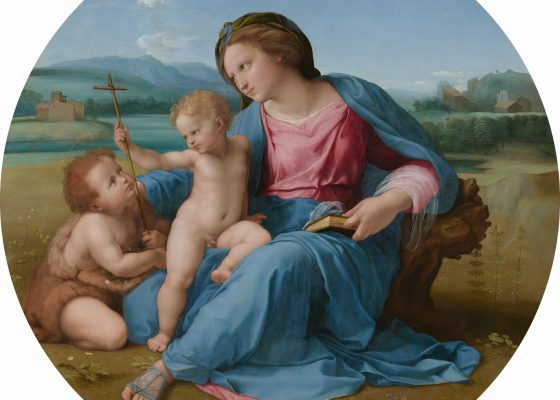
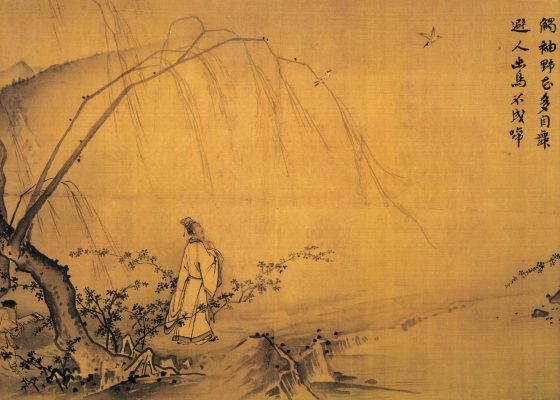

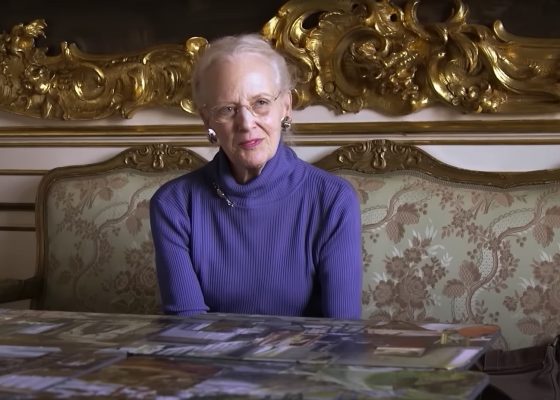
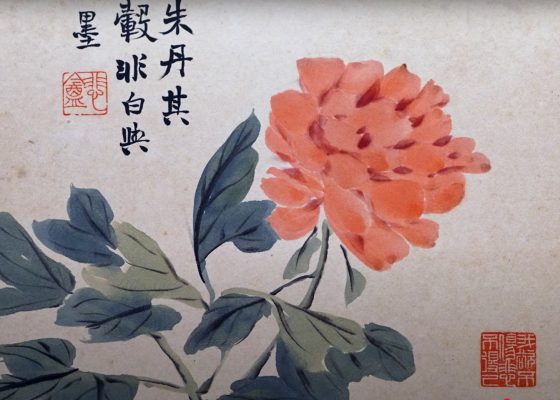

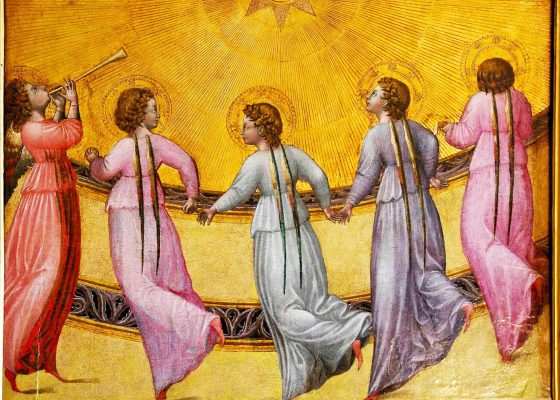
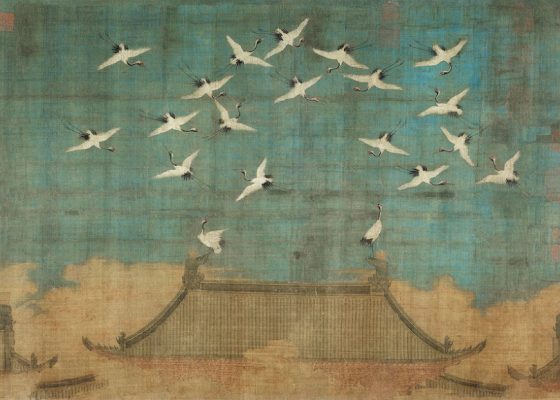


Cancel anytime


Using our website
You may use the The Middle Land website subject to the Terms and Conditions set out on this page. Visit this page regularly to check the latest Terms and Conditions. Access and use of this site constitutes your acceptance of the Terms and Conditions in-force at the time of use.
Intellectual property
Names, images and logos displayed on this site that identify The Middle Land are the intellectual property of New San Cai Inc. Copying any of this material is not permitted without prior written approval from the owner of the relevant intellectual property rights.
Requests for such approval should be directed to the competition committee.
Please provide details of your intended use of the relevant material and include your contact details including name, address, telephone number, fax number and email.
Linking policy
You do not have to ask permission to link directly to pages hosted on this website. However, we do not permit our pages to be loaded directly into frames on your website. Our pages must load into the user’s entire window.
The Middle Land is not responsible for the contents or reliability of any site to which it is hyperlinked and does not necessarily endorse the views expressed within them. Linking to or from this site should not be taken as endorsement of any kind. We cannot guarantee that these links will work all the time and have no control over the availability of the linked pages.
Submissions
All information, data, text, graphics or any other materials whatsoever uploaded or transmitted by you is your sole responsibility. This means that you are entirely responsible for all content you upload, post, email or otherwise transmit to the The Middle Land website.
Virus protection
We make every effort to check and test material at all stages of production. It is always recommended to run an anti-virus program on all material downloaded from the Internet. We cannot accept any responsibility for any loss, disruption or damage to your data or computer system, which may occur while using material derived from this website.
Disclaimer
The website is provided ‘as is’, without any representation or endorsement made, and without warranty of any kind whether express or implied.
Your use of any information or materials on this website is entirely at your own risk, for which we shall not be liable. It is your responsibility to ensure any products, services or information available through this website meet your specific requirements.
We do not warrant the operation of this site will be uninterrupted or error free, that defects will be corrected, or that this site or the server that makes it available are free of viruses or represent the full functionality, accuracy and reliability of the materials. In no event will we be liable for any loss or damage including, without limitation, loss of profits, indirect or consequential loss or damage, or any loss or damages whatsoever arising from the use, or loss of data, arising out of – or in connection with – the use of this website.
Last Updated: September 11, 2024
New San Cai Inc. (hereinafter “The Middle Land,” “we,” “us,” or “our”) owns and operates www.themiddleland.com, its affiliated websites and applications (our “Sites”), and provides related products, services, newsletters, and other offerings (together with the Sites, our “Services”) to art lovers and visitors around the world.
This Privacy Policy (the “Policy”) is intended to provide you with information on how we collect, use, and share your personal data. We process personal data from visitors of our Sites, users of our Services, readers or bloggers (collectively, “you” or “your”). Personal data is any information about you. This Policy also describes your choices regarding use, access, and correction of your personal information.
If after reading this Policy you have additional questions or would like further information, please email at middleland@protonmail.com.
PERSONAL DATA WE COLLECT AND HOW WE USE IT
We collect and process personal data only for lawful reasons, such as our legitimate business interests, your consent, or to fulfill our legal or contractual obligations.
Information You Provide to Us
Most of the information Join Talents collects is provided by you voluntarily while using our Services. We do not request highly sensitive data, such as health or medical information, racial or ethnic origin, political opinions, religious or philosophical beliefs, trade union membership, etc. and we ask that you refrain from sending us any such information.
Here are the types of personal data that you voluntarily provide to us:
As a registered users or customers, you may ask us to review or retrieve emails sent to your business. We will access these emails to provide these services for you.
We use the personal data you provide to us for the following business purposes:
Information Obtained from Third-Party Sources
We collect and publish biographical and other information about users, which we use to promote the articles and our bloggers who use our sites. If you provide personal information about others, or if others give us your information, we will only use that information for the specific reason for which it was provided.
Information We Collect by Automated Means
Log Files
The site uses your IP address to help diagnose server problems, and to administer our website. We use your IP addresses to analyze trends and gather broad demographic information for aggregate use.
Every time you access our Site, some data is temporarily stored and processed in a log file, such as your IP addresses, the browser types, the operating systems, the recalled page, or the date and time of the recall. This data is only evaluated for statistical purposes, such as to help us diagnose problems with our servers, to administer our sites, or to improve our Services.
Do Not Track
Your browser or device may include “Do Not Track” functionality. Our information collection and disclosure practices, and the choices that we provide to customers, will continue to operate as described in this Privacy Policy, whether or not a “Do Not Track” signal is received.
HOW WE SHARE YOUR INFORMATION
We may share your personal data with third parties only in the ways that are described in this Privacy Policy. We do not sell, rent, or lease your personal data to third parties, and We does not transfer your personal data to third parties for their direct marketing purposes.
We may share your personal data with third parties as follows:
There may be other instances where we share your personal data with third parties based on your consent.
HOW WE STORE AND SECURE YOUR INFORMATION
We retain your information for as long as your account is active or as needed to provide you Services. If you wish to cancel your account, please contact us middleland@protonmail.com. We will retain and use your personal data as necessary to comply with legal obligations, resolve disputes, and enforce our agreements.
All you and our data are stored in the server in the United States, we do not sales or transfer your personal data to the third party. All information you provide is stored on a secure server, and we generally accepted industry standards to protect the personal data we process both during transmission and once received.
YOUR RIGHTS/OPT OUT
You may correct, update, amend, delete/remove, or deactivate your account and personal data by making the change on your Blog on www.themiddleland.com or by emailing middleland@protonmail.com. We will respond to your request within a reasonable timeframe.
You may choose to stop receiving Join Talents newsletters or marketing emails at any time by following the unsubscribe instructions included in those communications, or you can email us at middleland@protonmail.com
LINKS TO OTHER WEBSITES
The Middle Land include links to other websites whose privacy practices may differ from that of ours. If you submit personal data to any of those sites, your information is governed by their privacy statements. We encourage you to carefully read the Privacy Policy of any website you visit.
NOTE TO PARENTS OR GUARDIANS
Our Services are not intended for use by children, and we do not knowingly or intentionally solicit data from or market to children under the age of 18. We reserve the right to delete the child’s information and the child’s registration on the Sites.
PRIVACY POLICY CHANGES
We may update this Privacy Policy to reflect changes to our personal data processing practices. If any material changes are made, we will notify you on the Sites prior to the change becoming effective. You are encouraged to periodically review this Policy.
HOW TO CONTACT US
If you have any questions about our Privacy Policy, please email middleland@protonmail.com
The Michelin brothers created the guide, which included information like maps, car mechanics listings, hotels and petrol stations across France to spur demand.
The guide began to award stars to fine dining restaurants in 1926.
At first, they offered just one star, the concept was expanded in 1931 to include one, two and three stars. One star establishments represent a “very good restaurant in its category”. Two honour “excellent cooking, worth a detour” and three reward “exceptional cuisine, worth a
Thank you for your participation,
please Log in or Sign up to Vote

123Sign in to your account